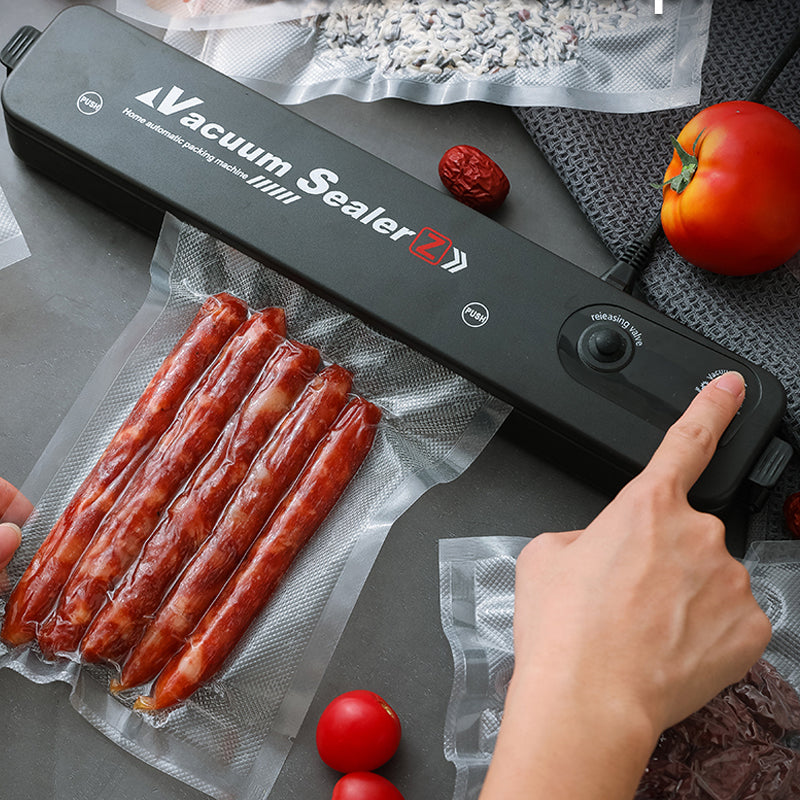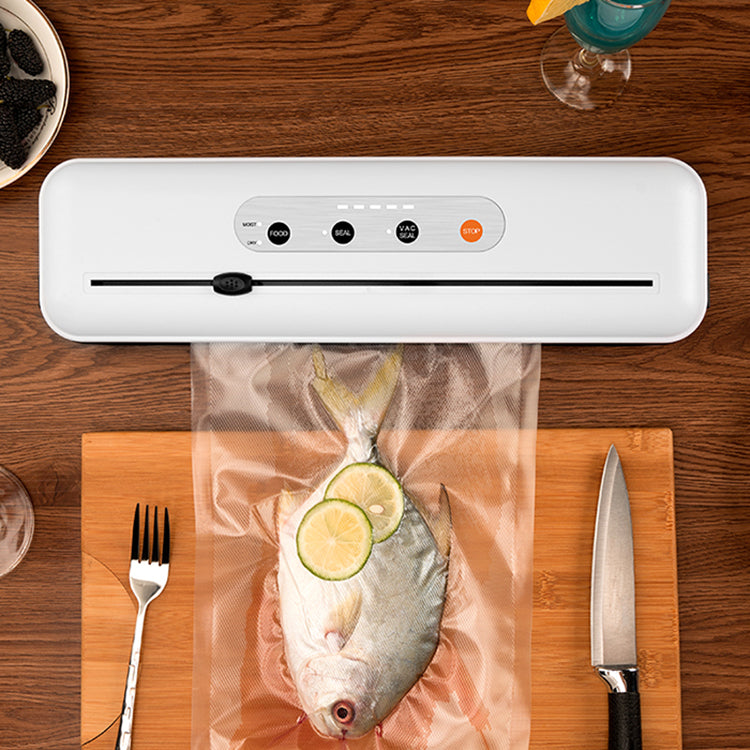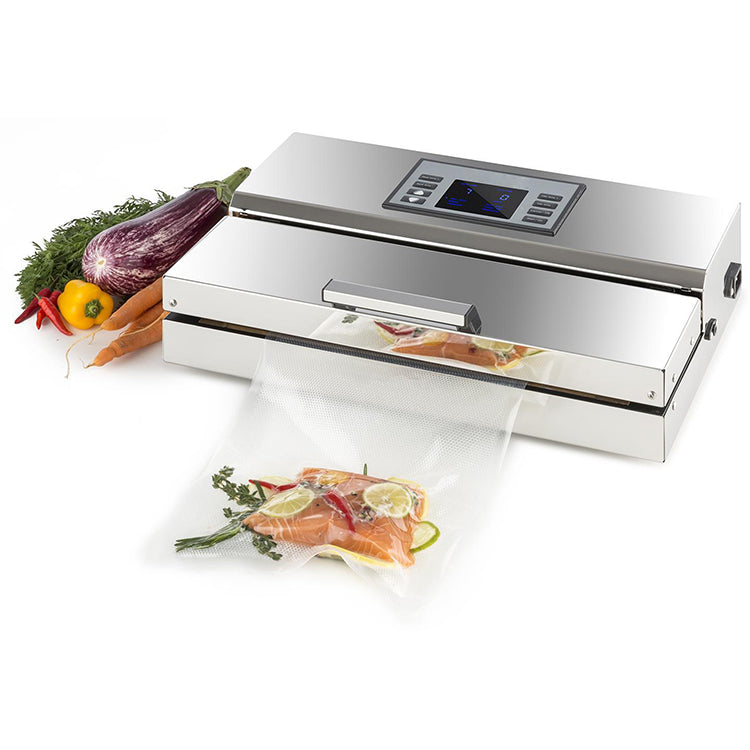Vacuum Food Storage Chart PDF

Vacuum Food Storage Guide
Keep it fresh, save money and fight waste!
Tired of throwing away food? Want to enjoy the flavors of summer all year round? This guide shows you how your PRO Sealer can keep your favorite foods fresh for months. Discover optimal storage times and become a vacuum sealing expert!
Download the PDF here
🥩 Meats
| Meat | 🧊 (Refrigerator: 3°C +/- 2°C) | ❄️ (Freezer: -18°C +/- 2°C) |
|---|---|---|
| Beef | 6 to 8 days | 15 to 20 months |
| Chicken | 6 to 8 days | 15 to 20 months |
| Pork | 7 to 9 days | 15 to 20 months |
| Lamb | 6 to 8 days | 15 to 20 months |
| Calf | 6 to 8 days | 15 to 20 months |
🐟 Fish
| Fish | 🧊 (Refrigerator: 3°C +/- 2°C) | ❄️ (Freezer: -18°C +/- 2°C) |
|---|---|---|
| Salmon | 8 to 15 days | 8 to 12 months |
| Tuna | 9 to 13 days | 8 to 12 months |
| Bar | 9 to 13 days | 8 to 12 months |
| Trout | 8 to 12 days | 8 to 12 months |
| Sea bream | 9 to 14 days | 8 to 12 months |
🥦 Vegetables
| Vegetables | 🧊 (Refrigerator: 3°C +/- 2°C) | ❄️ (Freezer: -18°C +/- 2°C) |
|---|---|---|
| Lettuce | 8 to 10 days | 17 to 23 months |
| Carrots | 8 to 10 days | 17 to 23 months |
| Broccoli | 10 to 15 days | 17 to 23 months |
| Peppers | 10 to 15 days | 17 to 23 months |
| Onions | 8 to 10 days | 17 to 23 months |
| Spinach | 10 to 12 days | 17 to 23 months |
🍓 Fruits
| Fruits | 🧊 (Refrigerator: 3°C +/- 2°C) | ❄️ (Freezer: -18°C +/- 2°C) |
|---|---|---|
| Apples | 9 to 15 days | 10 to 15 months |
| Bananas | 9 to 15 days | 10 to 15 months |
| Lemons | 9 to 15 days | 10 to 15 months |
| Strawberries | 9 to 15 days | 10 to 15 months |
| Mangoes | 9 to 15 days | 10 to 15 months |
| Peaches | 9 to 15 days | 10 to 15 months |
🍝 Cooked Foods
| Cooked food | 🧊 (Refrigerator: 3°C +/- 2°C) | ❄️ (Freezer: -18°C +/- 2°C) |
|---|---|---|
| Rice | 6 to 8 days | 6 to 8 months |
| Pasta | 7 to 10 days | 6 to 8 months |
| Legumes | 6 to 7 days | 6 to 8 months |
| Soups | 3 to 5 days | 6 to 8 months |
| Ready meals | 5 to 10 days | 6 to 8 months |
⚠️ IMPORTANT: Precautions and Hygiene
For safe and optimal storage, your safety is our priority.
- Disclaimer: These times are estimates and may vary. Packaging quality, food freshness before vacuuming, and storage temperature are crucial factors. Always label your bags with the date and contents.
- Hygiene: Always follow basic hygiene rules when handling food.
The 6 Golden Rules of Vacuum Storage
- Clean: Always wash and prepare your food properly before vacuum sealing.
- Check: Make sure the food is suitable for vacuum storage.
- Use quality materials: Use food-grade packaging to avoid contamination.
- Seal tightly: Make sure to remove all air for optimal preservation.
- Respect the temperatures: Store your food at the recommended temperatures.
- Respect the dates: Consume your food before the expiration date.
🏆 Our recommended machines
Whether you are a beginner, a regular user or a demanding professional, here is our selection to help you find the perfect machine.
|
For economical sealers. 
Vacuum Sealer™ vacuum machine
|
For regular sealers. 
Vacuum packaging machine for individuals
|
For professionals. 
Vacuum machine with 2 sealing bars (PRO)
|
Ready to optimize your storage?
Whether you need custom rolls or embossed bags, find all the professional-quality consumables you need in our store.
Discover our bags and accessories